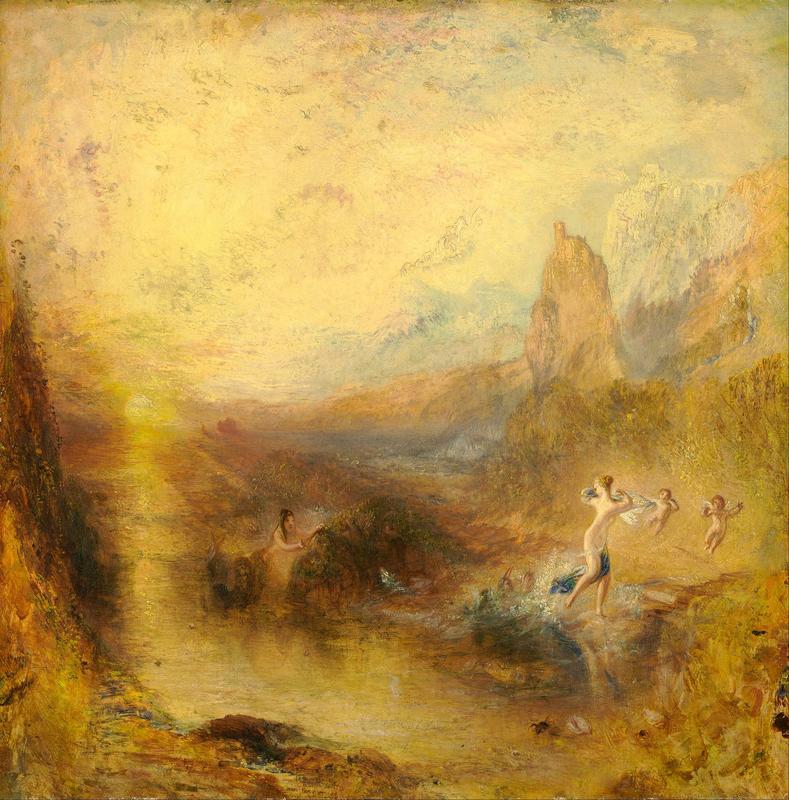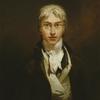More about Glaucus and Scylla
- All
- Info
- Shop

Contributor
In his later work, Turner liked to tell stories from the Roman poet Ovid, including the story of Glaucus and Scylla.
If you gave supernatural powers to guests on the "Jerry Springer Show," and locked Steve, the security guard, in the parking lot, it might end up like the story of Glaucus and Scylla. You would think that Circe, being the daughter of the sun deity, Helios, would have everything she wants. But she is jealous of the fact that Glaucus has a thing for Scylla, so she pursues Scylla with crashing waves, as Turner shows, vaguely, in this ethereal painting. Eventually, Circe turns Scylla into a monster. I guess Jerry's "final thought" wouldn't be necessary. The theological and mythic significance of these pagan stories persisted even as the Romans adopted Christianity, claiming to have left all that pagan daytime-soap stuff behind, but secretly fiending for it.
The many stories of the owners of the painting, including the mayor of London, have added to the its value. The nightmare of Ovid in Glaucus and Scylla became part of the great nightmare of 20th century Europe. Despite their great art traditions, Italy and France became allied with the completely psychotic drive for world domination that was en vogue in Germany in the years leading up to WWII. Nobody ever said that great art leads to great politics. But while Italy's Mussolini, whose body his countrymen eventually defiled like a defeated Roman emperor, influenced the German crazy train with a clear conscience from the beginning, France was more casually crazy at first, but ultimately gave in.
One of the things the French Vichy government did was steal Glaucus and Scylla from a villa owned by a family of Jews with British citizenship who were living in France, the Jaffés. A character named Emil Leitz attended an event in Nice, France hosted by the "Commissariat aux questions juives de l’Etat Français," the "Commission on Jewish questions of the French state," on 12-13 July 1943. I guess one of the main "questions" the Vichy government had was how much money they could get from selling stuff stolen from the Jewish population. Of course, it was all perfectly legal. In 2006, a Jaffé descendant named Monteagle proved to the owners of Glaucus and Scylla, the Kimbell Art Museum, that the Vichy government had stolen the painting, and the Kimbell took relatively quick action to return it, which earned them a lot of props from legal scholars and other people following the story. The family immediately sold it to Christie's, and the following year, the Kimbell purchased it for the second time, from Christie's, for $5.7 million.
Sources
- Fouchard Filippi Communications. Press release, "LATE TURNER: PAINTING SET FREE." Tate, Jun 10, 2014.
- Gerstenbluth, Patty, and Lucille Roussin. "International Cultural Property." The International Lawyer 41, No. 2, International Legal Developments in Review (Summer 2007): 613-628.
- Hutt, Sherry, and David Tarler. Yearbook of Cultural Property Law 2007. London: Routledge, 2016.
- Johnson, Patricia C. "Kimbell Art Museum pays millions to get painting back." Houston Chronicle, Apr. 22, 2007, https://www.chron.com/entertainment/article/Kimbell-Art-Museum-pays-mil….
- Petacco, Arrigo. L'uomo della provvidenza: Mussolini, ascesa e caduta di un mito. Milano: Mondadori, 2004.
- Simpson, Michael. The Metamorphoses of Ovid. Amherst, MA: University of Massachusetts Press, 2003.












